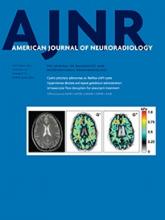We would like to alert the neuroradiology community to a recent publication in Neuro-Oncology1 that describes a standardized brain tumor MR imaging protocol, which is expected to gain widespread use in multicenter clinical trials of glioblastoma therapy.
Imaging is critical in the assessment of treatment response in glioblastoma, but its use faces a variety of challenges, including the morphologic complexity of these tumors, the confounding effects of therapies such as radiation and antiangiogenic agents, and the modest (at best) incremental benefits that new therapies generate. An important goal of imaging in clinical trials is to minimize assessment variability so that data can be pooled across sites to optimize the detection of treatment effects and provide accurate comparisons with prior trials.
The Imaging End Points in Brain Tumor Clinical Trials workshop, held in January 2014, involved patient advocates, device and pharmaceutical industry leaders, the FDA, the National Cancer Institute (NCI), and academic experts in neuro-oncology, neuroradiology, and imaging physics, with the goal of improving the use of imaging end points in glioblastoma clinical trials. The workshop was predicated on the acknowledgment that large trials using survival end points are costly. Improving the use of imaging would allow smaller, less expensive clinical trials and help accelerate the development of new treatments.
A key recommendation that emerged from this meeting and that received the support of all participants, including the FDA, was the need to standardize the MR imaging acquisition and analysis for response assessment in glioblastoma trials. In response to this recommendation, the Jumpstarting Brain Tumor Development Coalition (consisting of several professional societies and patient advocacy groups) assembled a group of leading scientists, clinicians, and radiologists, who developed a standardized anatomic MR imaging protocol. This protocol permits response assessment according to established criteria (Response Assessment in Neuro-Oncology [RANO]) as well as emerging approaches (such as tumor volumetry and T1 subtraction). By minimizing variability, it allows trial results to be aggregated meaningfully across sites and across trials. It also facilitates the development of robust automated segmentation methods on anatomic imaging and advanced applications such as diffusion and perfusion. The protocol balances these goals with practicality and widespread availability, by using sequences that are found on most MR imaging scanners as a result of the Alzheimer's Disease Neuroimaging Initiative.
The Standardized Brain Tumor Imaging Protocol (SBTIP) is based on the European Organisation for Research and Treatment of Cancer (EORTC) brain tumor imaging protocol that is being used successfully in clinical trials in Europe.2 While the SBTIP parallels the methods already used in clinical practice in many centers, it is targeted for clinical trial use rather than for routine diagnostic imaging, because the latter may require other sequences for lesion detection and differential diagnoses. The protocol is similar to that recommended by the RANO group for assessment of metastatic disease and is already beginning to be implemented in several clinical trials funded by industry, the NCI, and cooperative groups.
The most significant difference from protocols in common clinical use is the acquisition of pre- and postcontrast 3D T1-weighted sequences. While some may not favor these volumetric acquisitions, compliance with the standardized protocol does not preclude the addition of other imaging sequences to local protocols. As the SBTIP is accepted by the FDA and becomes more widely adopted in clinical trials, it will be important for neuroradiologists to be aware of it and to make it available. This availability will ensure that their institutions will be eligible to participate in trials that require it and will be able to contribute data that can be meaningfully analyzed with those from other participating centers to help speed the development of novel therapies for this devastating disease.
Footnotes
Disclosures: Gregory V. Goldmacher—UNRELATED: Employment: ICON Plc. Whitney B. Pope—UNRELATED: Amgen, Roche, Celldex, Tocagen.
REFERENCES
- © 2015 by American Journal of Neuroradiology







